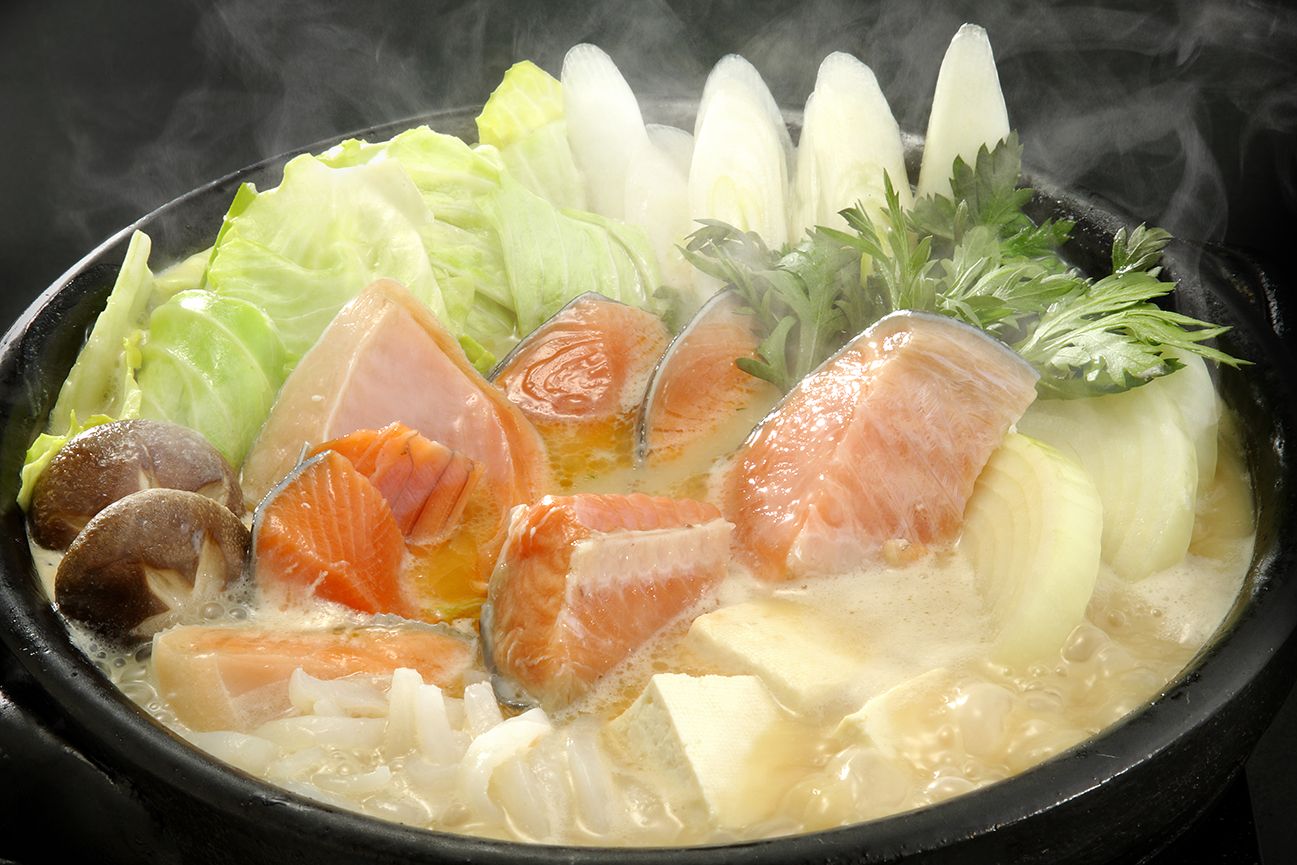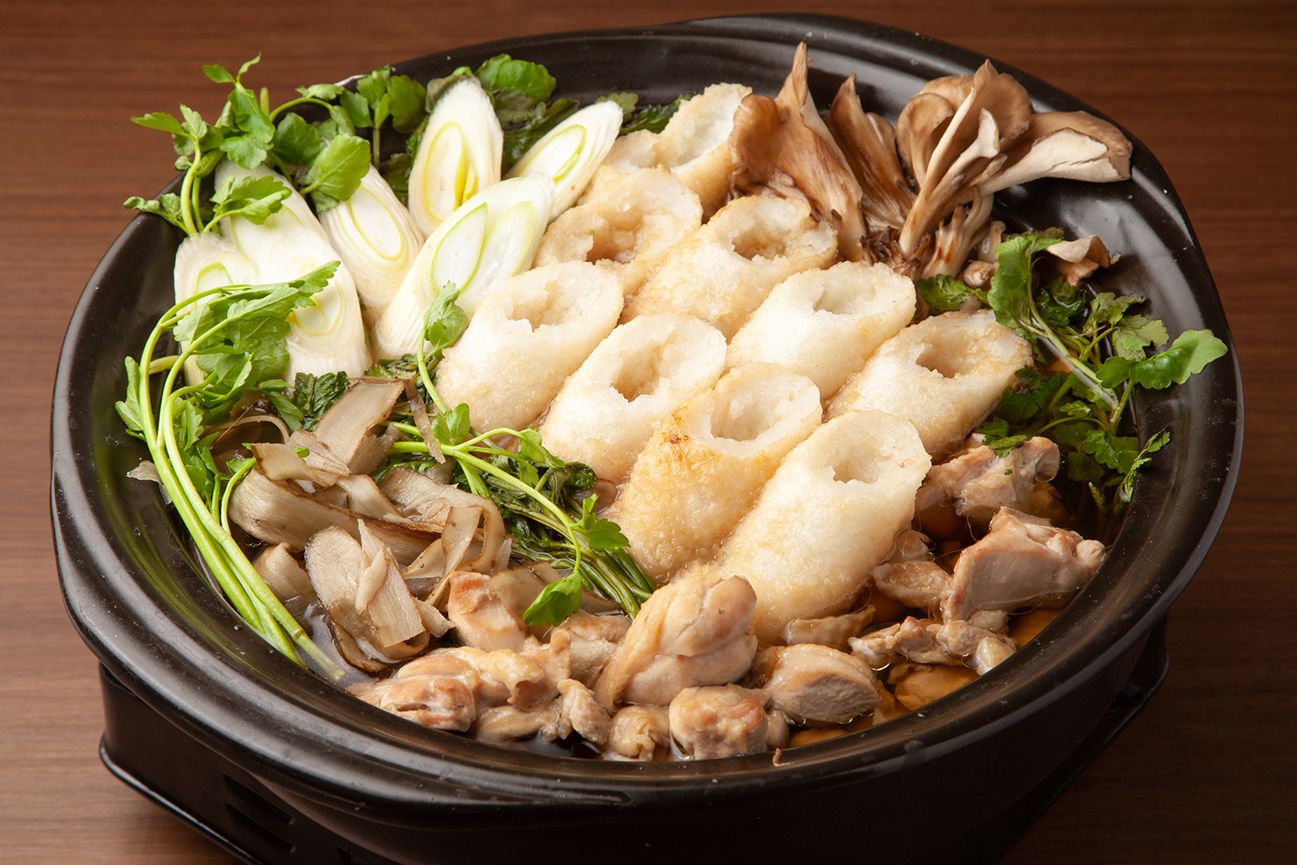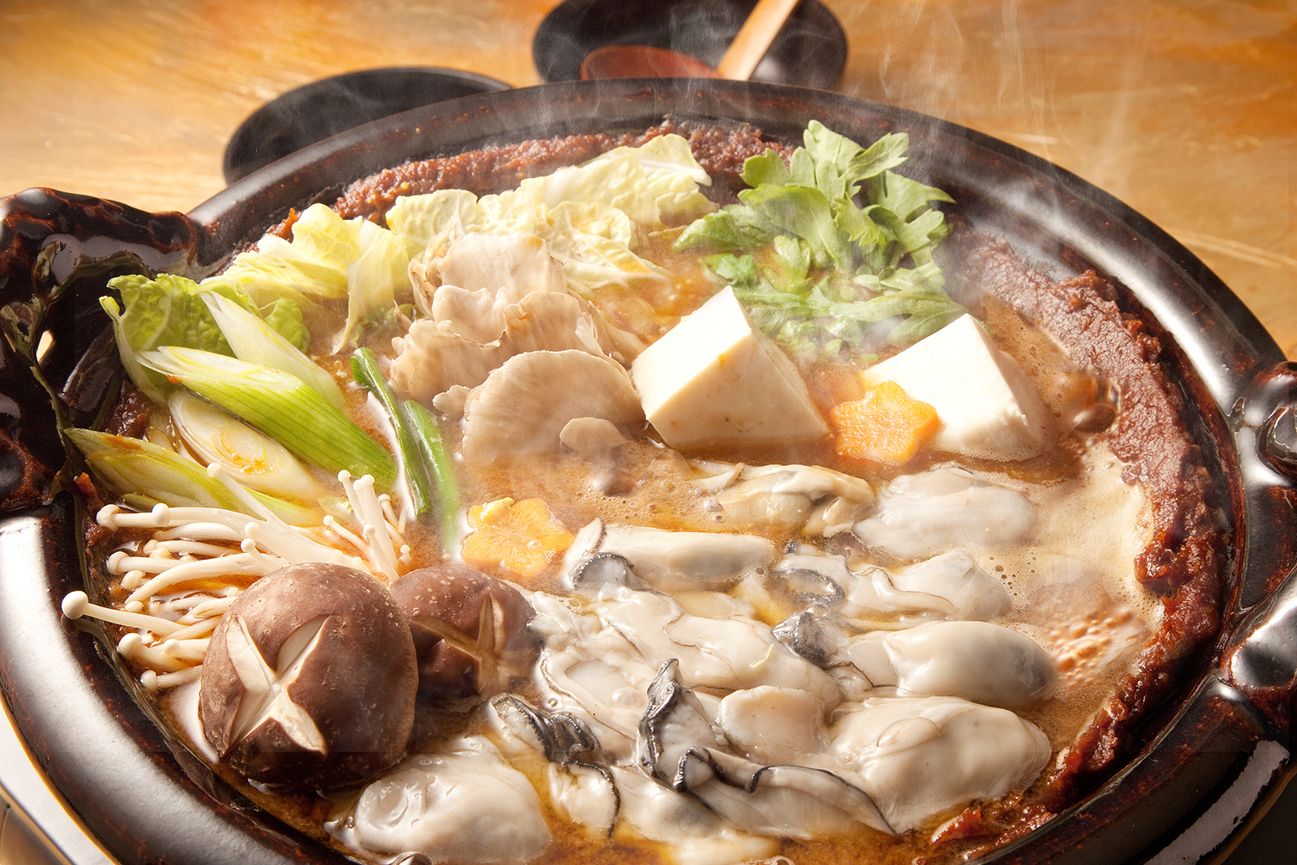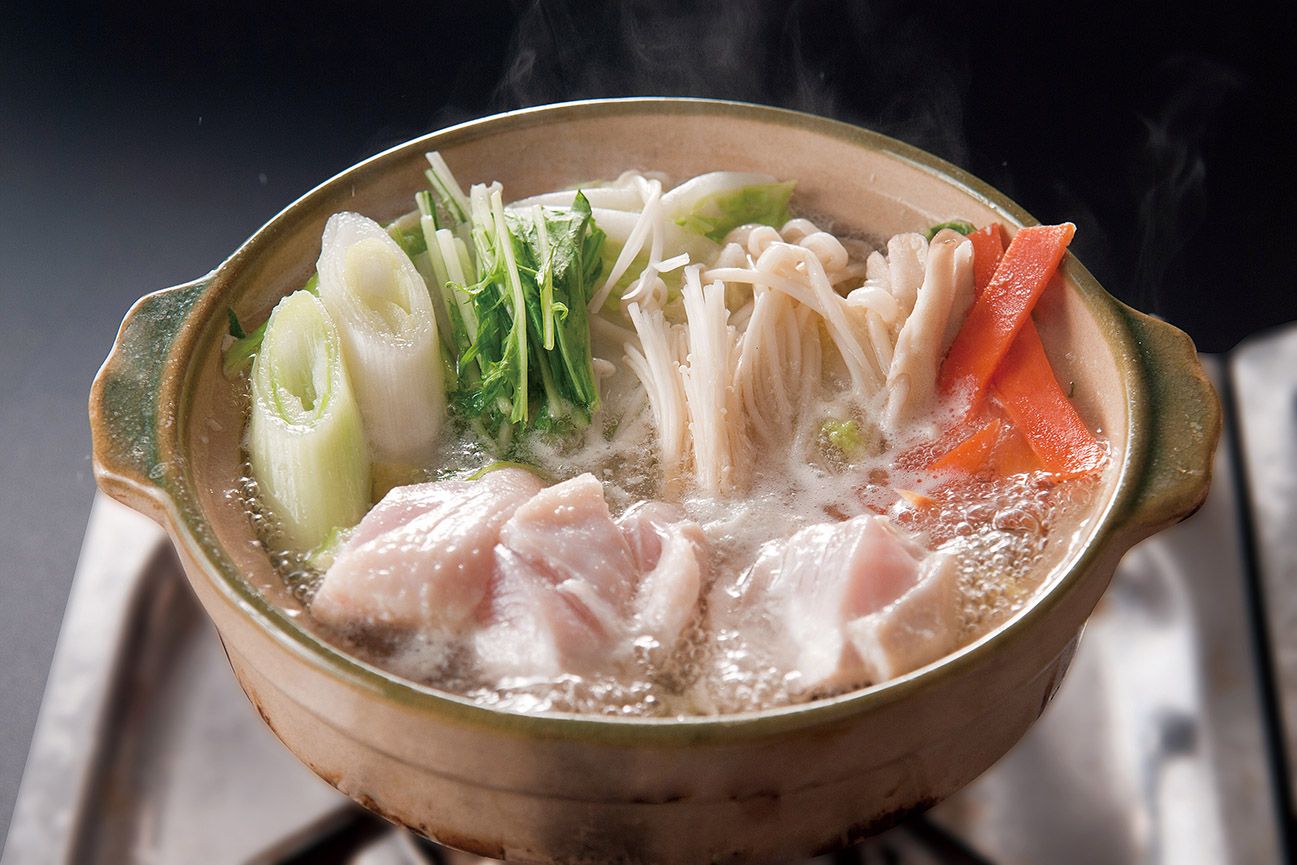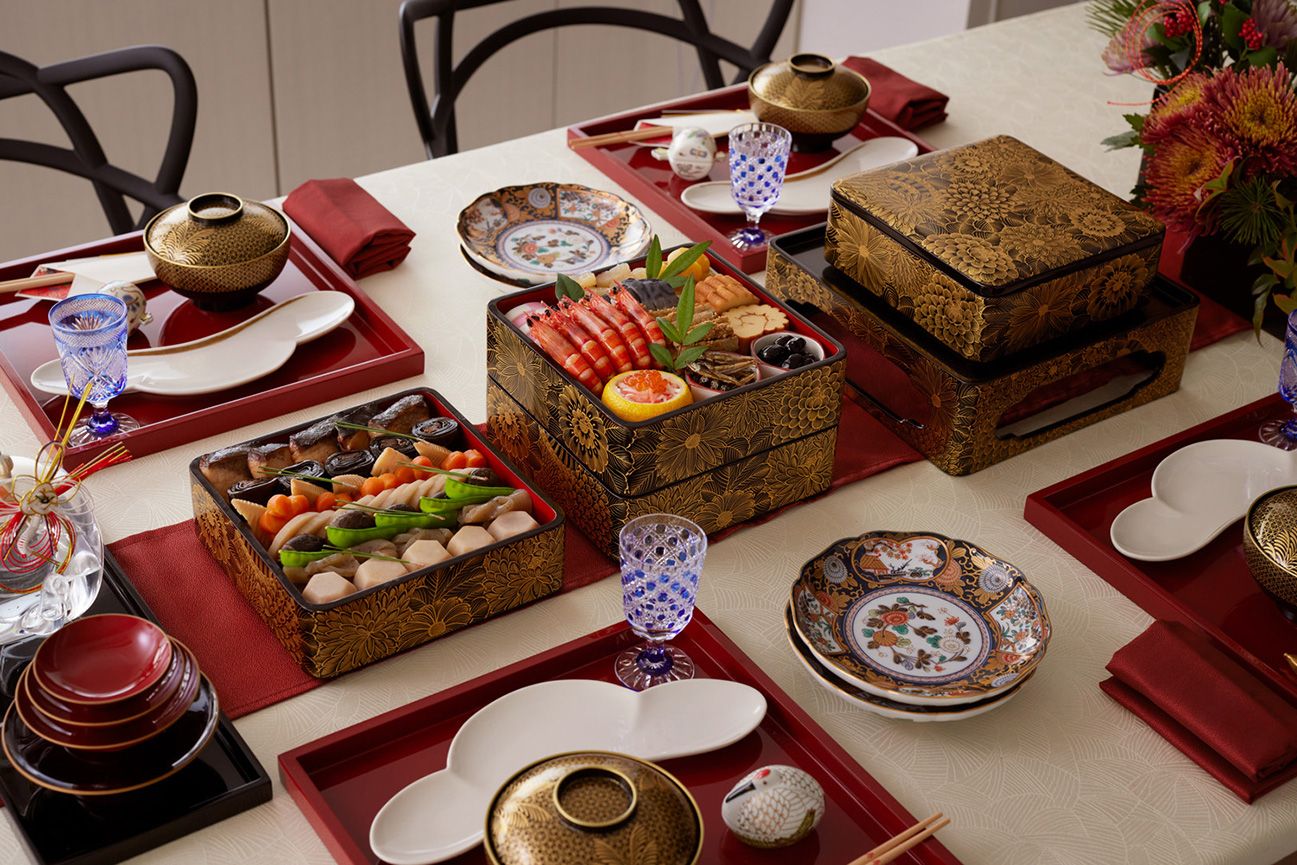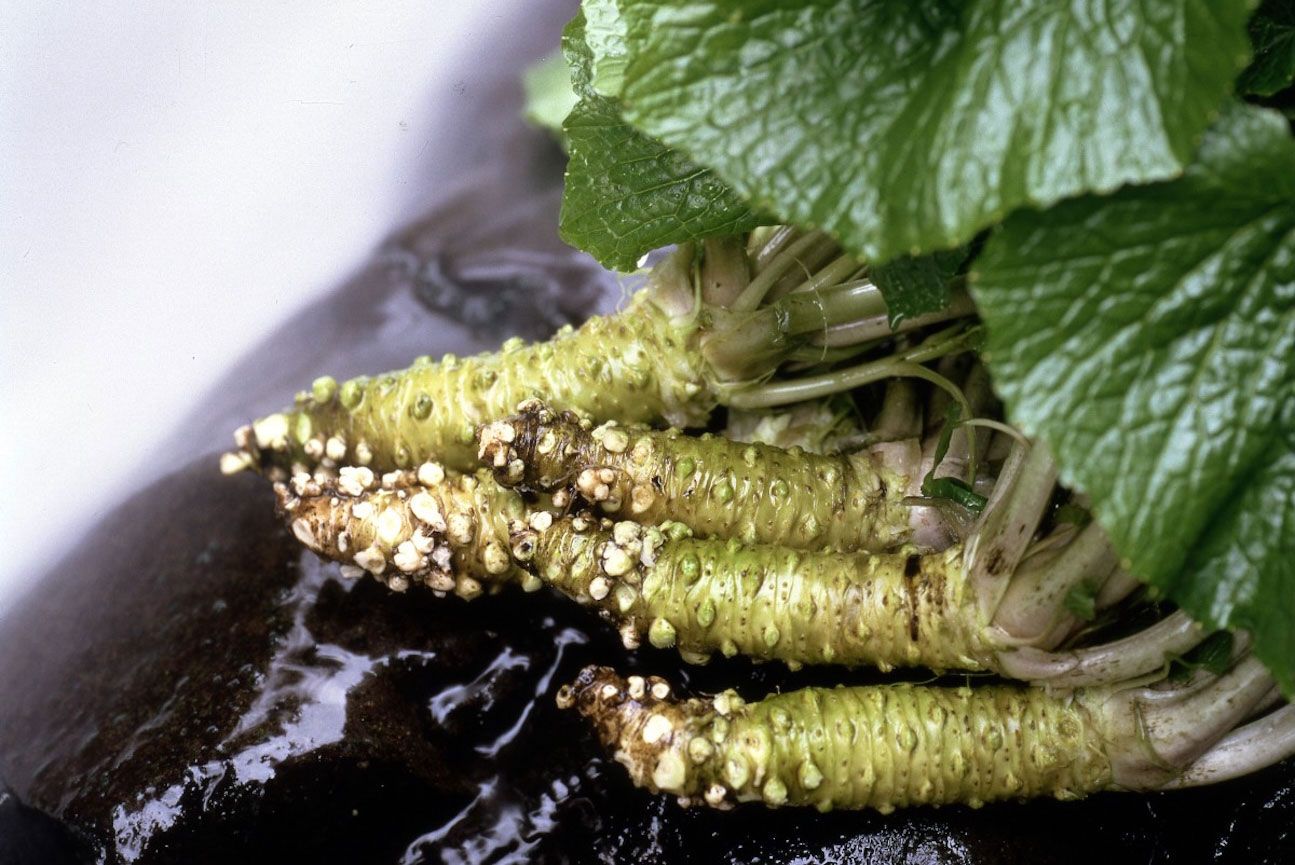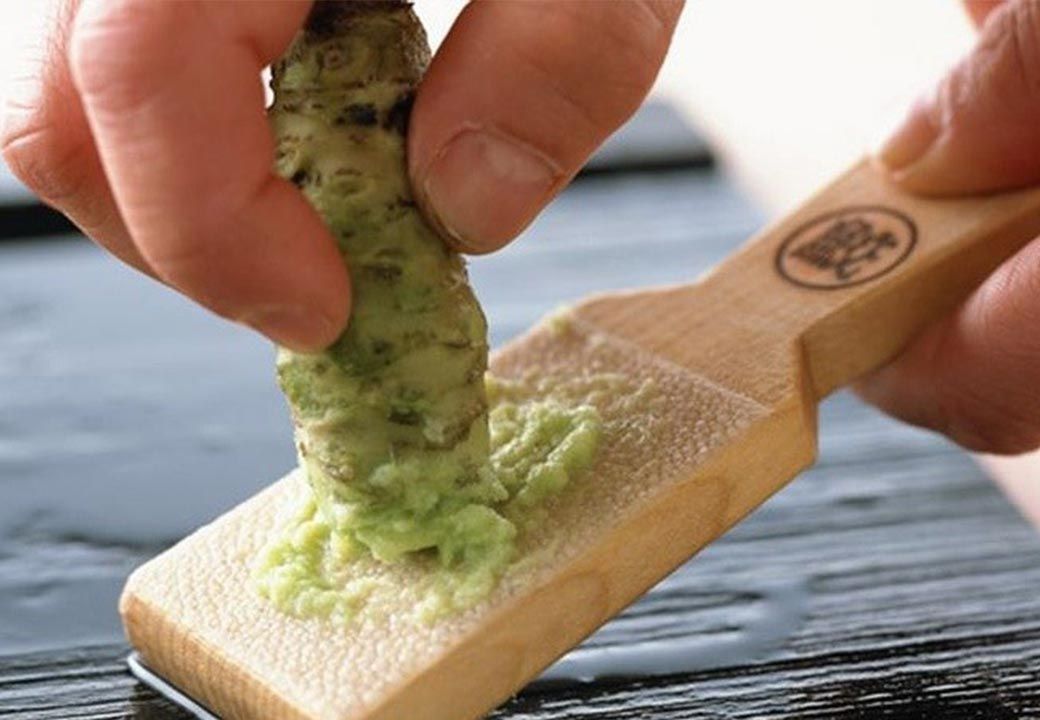
The nabe (Japanese-style hot pot) dishes that bring people together in the Japanese winter
Nabe dishes, which are heated and prepared right at the kitchen table in a single pot, are an essential element of winter life in Japan. Nabe dishes are chock-full of various ingredients - meat, fish, vegetables, rice, and more - and are offered in countless variations. Eaten alongside family and people you feel truly comfortable around, they warm both the body and soul. Here, we will introduce you to some of the nabe dishes that emerged throughout Japan, having shifted and evolved alongside various changes in the country’s food culture.
People in Japan have used nabe (pots, as in the cooking utensil) to boil and cook food since the invention of earthenware in the Jomon period (approximately 15,000-2,500 years ago). At first, nabe dishes consisted mostly of potatoes and nuts, and were seasoned only with salt. In the Nara period (710-794), however, various seasonings - introduced from China - came to be produced in Japan. This allowed people in Japan to season vegetables, meat, and fish, and cook these ingredients in nabe, helping to drive the evolution of Japanese cuisine. It was only in the latter half of the Edo period (approximately 1820-1850), however, that people in Japan began to take the nabe with them to the zashiki (dining area), along with the shichirin (earthen charcoal braziers) used to heat them. Until then, nabe dishes had been prepared over wood fires in earthen floors and hearths. As food culture among the common people continued to develop, restaurants began serving dishes like yudofu nabe (tofu hot pot), dengaku nabe (tofu and konjac hot pot), and dojo nabe (loach hot pot).
The Meiji era (1868-1912) saw the end of Japan’s Edo period isolationist foreign policy and the start of Western influence on Japanese culture, with meat dishes going from something eaten occasionally to more a part of everyday life. A prime example of this was gyunabe (beef hot pot). This dish is now known all over the world as sukiyaki - a word derived from a farming implement called suki (spade). It’s said to come from a custom in which people would grill chicken over worn-out suki placed over a fire. Sukiyaki is made by cooking beef in an iron pot (though people back then used chicken instead), seasoning it with a heavily-seasoned broth made with soy sauce, sugar, sake, and mirin. The beef is then dipped in raw egg before being eaten. Sukiyaki, often considered a “treat” due to its use of beautifully marbled Wagyu beef, is a very popular dish even now.
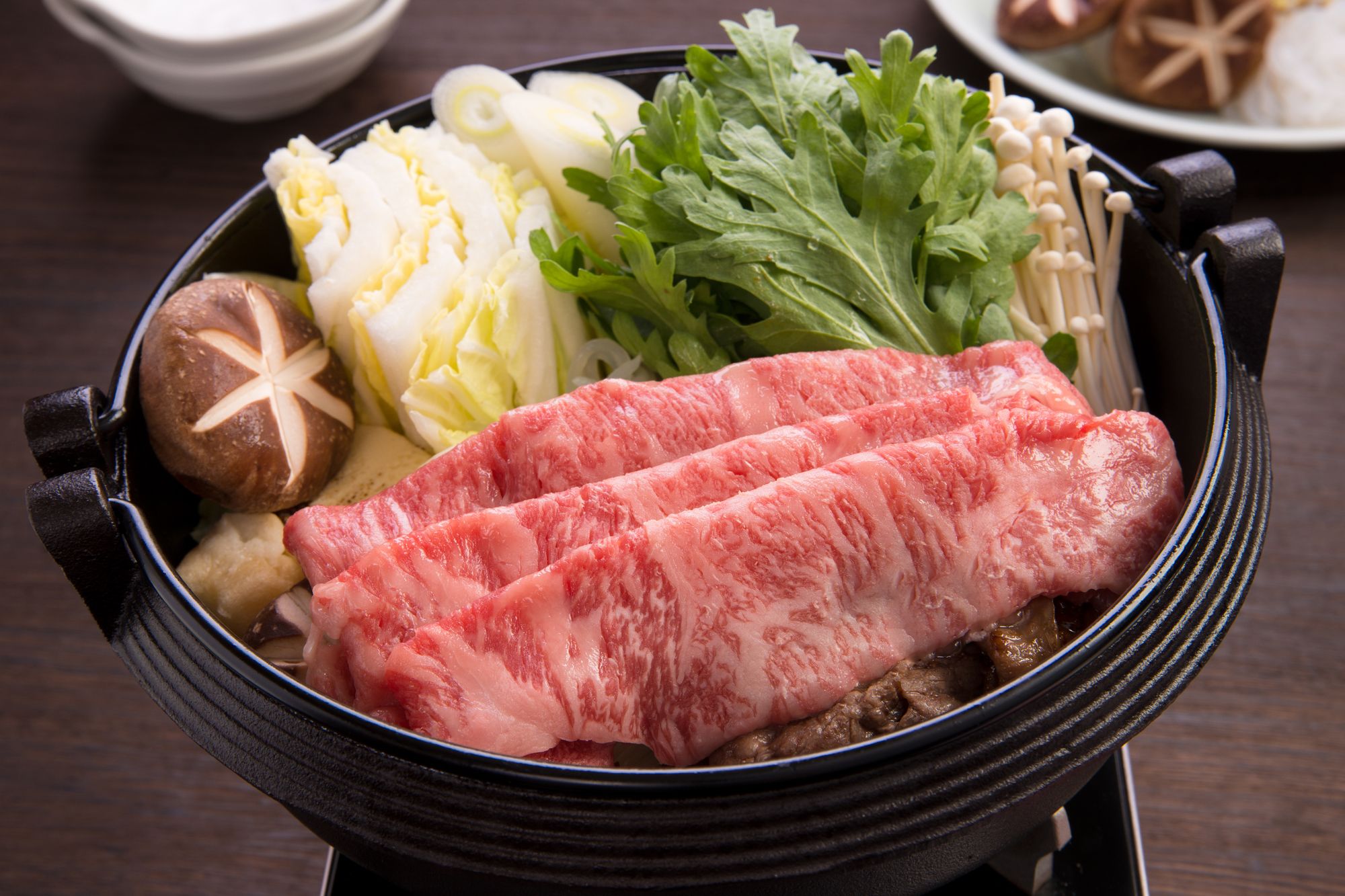
Beef with even marbling is preferred for sukiyaki. Other standard ingredients include green onion, chrysanthemum greens, and grilled tofu.
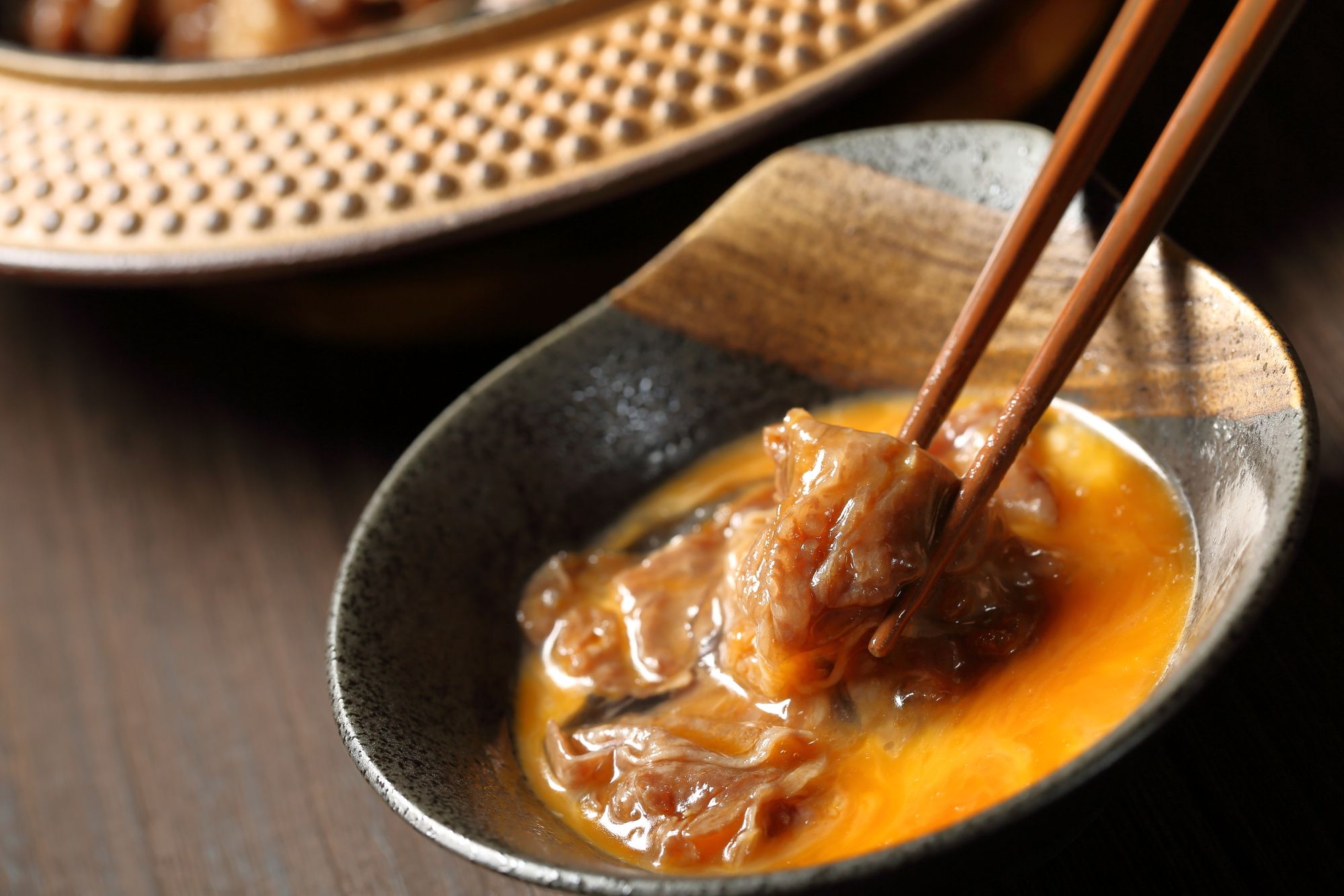
The beef, seasoned with the sweet and savory broth, is dipped into raw egg before being eaten.
The Showa era (1926-1989) began, and in 1969 came the invention of the portable gas stove (single-burner portable stoves fueled by gas canisters). This gave people more opportunities to eat around the same table as their family, relatives, and friends, and gradually made nabe an established part of Japanese food culture. Soon, distinct regional nabe dishes began to emerge all across Japan. These can be classified largely into four categories, depending on how they are cooked and seasoned.
The first type are those in which ingredients are cooked in water without any seasoning, such as yudofu, mizutaki (hot pot with chicken cooked directly in the boiling water), shabu shabu (thinly-sliced meat and vegetables served with dipping sauces). The second are nijiru nabe (soup hot pot) dishes in which ingredients are cooked in a seasoned broth, such as yose nabe (“anything goes” hot pot) and uosuki (fish sukiyaki). The third type are those in which the ingredients are cooked in a more heavily-seasoned broth, with the focus being the ingredients themselves, such as sukiyaki and dote nabe (hot pot with a coating of miso on the inside of the pot). The fourth type are those in which pre-cooked ingredients are simmered for long periods of time in a lightly-seasoned broth, such as oden (hot pot with light dashi broth). These categories encompass a wide variety of nabe dishes, each with their own combination of regional specialty ingredients and seasonings.
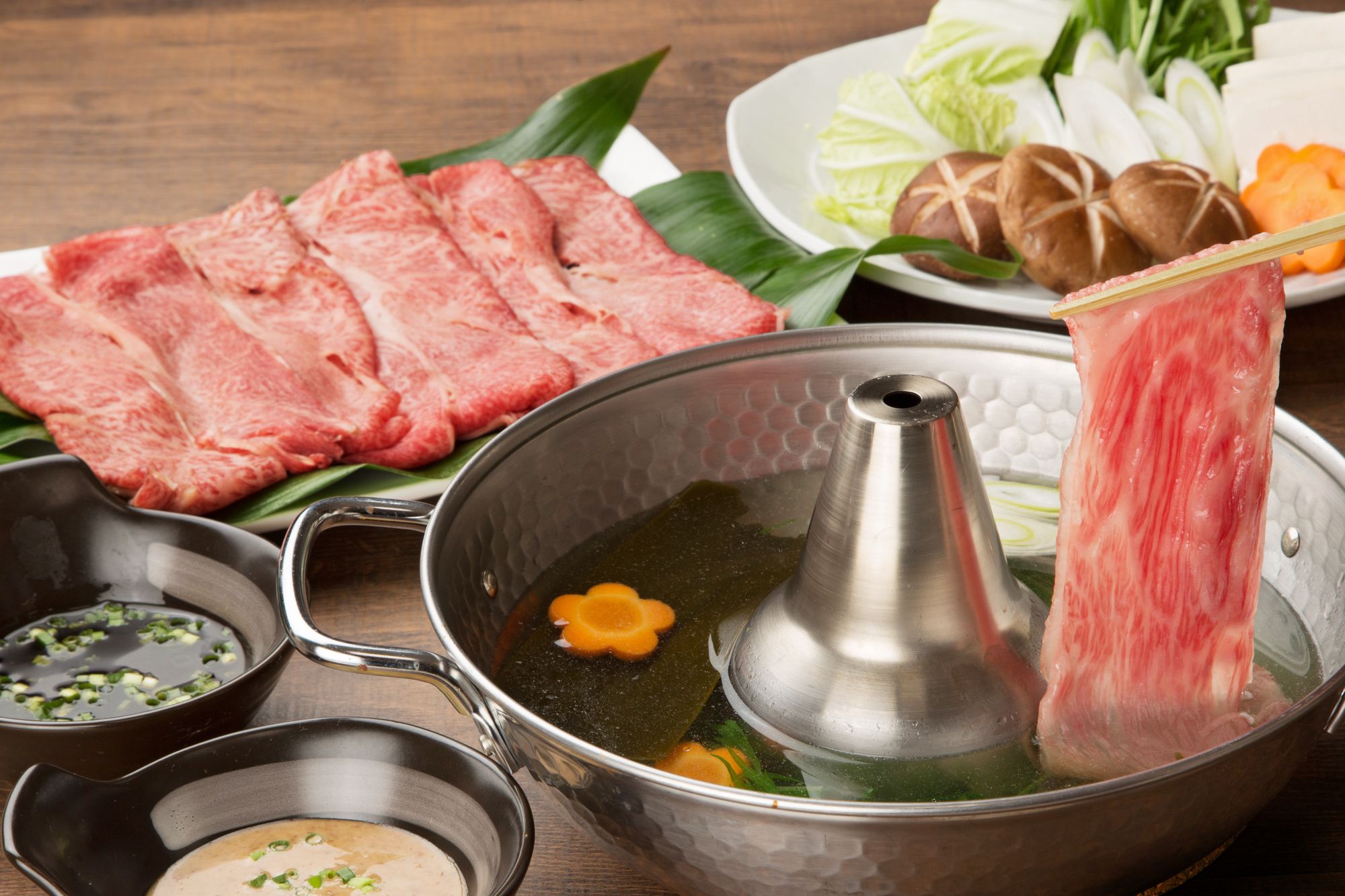
To eat shabu shabu, you take a piece of thinly-sliced meat, swish it around in a broth that often includes kombu, then dip it in sauces like ponzu (citrus dipping sauce) or gomadare (sesame sauce) to eat. There are many variations of shabu shabu in addition to the standard thinly-sliced beef or pork, such as those with yellowtail or crab.
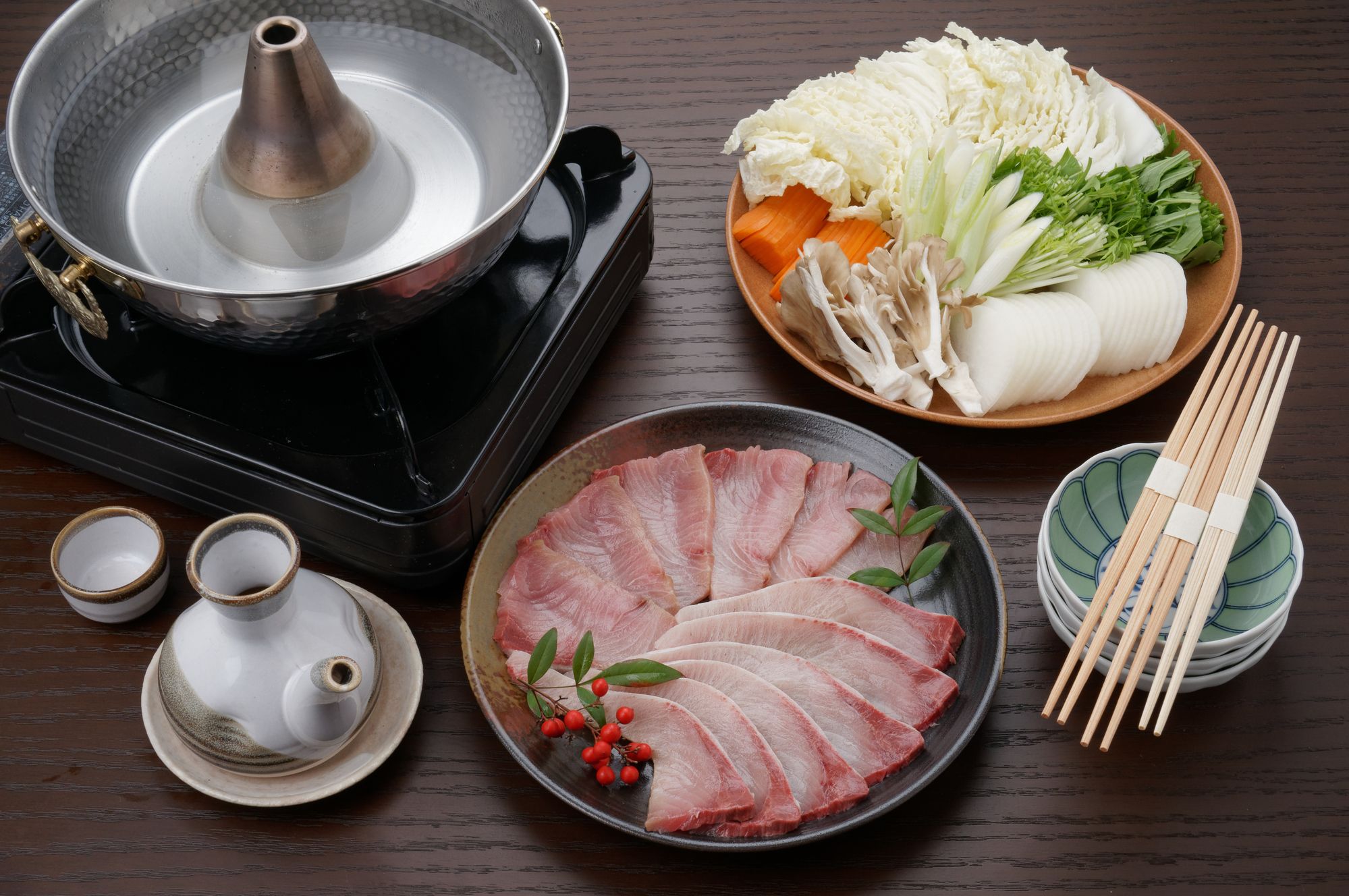
With burishabu (yellowtail shabu shabu), thinly-sliced yellowtail - which comes into season in winter - is swished lightly in the boiling water before being eaten.
While there are truly countless variations of nabe dishes in Japan, here are some of the most well-known.
Ishikari nabe (Salmon miso hot pot)
Staple winter dish of Hokkaido Prefecture. The star of the dish is the Hokkaido specialty, namazake (raw salmon). The dish is made by placing the namazake, cut into chunks - bone and all - into the kombu-based broth, along with tofu, green onions, spinach, cabbage, onion, and other ingredients, then seasoning with miso. The namazake can be substituted for salmon trout (commonly referred to as just “salmon”). Butter can be added to give the dish a bit more richness.
Kiritanpo nabe (Chicken hot pot with pounded rice)
Dish from Akita Prefecture, a region known for its rice. Kiritanpo refers to steamed rice that have been pounded, wrapped around a bamboo stick to form cylinders, and toasted. The dish is made by placing the kiritanpo, maitake mushrooms, green onions, burdock root, Japanese parsley, and royal fern in a broth made with bone-in chicken and kombu, then seasoning with soy sauce or miso. To make kiritanpo at home, wrap pounded rice around any stick-shaped object, toast on a grill, and chill so that it hardens.
Kaki no dote nabe (Oyster hot pot with a coating of miso inside the pot)
Dote nabe is a style of hot pot in which the inside of the pot is coated in miso, with the miso broken down over the course of the meal to be used as seasoning. The most famous type of dote nabe originated in Hiroshima Prefecture, a region known for its oysters. After miso is applied to the inside walls of the pot, the oyster and vegetables are placed in the pot, then placed over the fire, with the miso dissolved and broken down over the course of eating the dish. In most cases, the moisture from the ingredients themselves are used to dissolve the miso. You can add dashi stock, however, if the dish is too dry for your liking.
Mizutaki (Hot pot with chicken cooked directly in the boiling water)
Specialty dish from Fukuoka Prefecture, a region known for its consumption of chicken. The dish is made by simmering chicken, cut into chunks - bone, skin, and all - in a pot over a long period of time. There is almost no seasoning used, with the dish relying instead on the umami flavor from the chicken itself. Chicken, tofu, green onion, napa cabbage, and other ingredients are then placed into the rich cloudy broth to complete the dish. You can add your own finishing touches to the ingredients as you eat them - for instance, with ponzu, daikon oroshi (grated daikon radish), ichimi togarashi (ground red chili pepper), pepper, yuzu kosho (yuzu citrus chili paste), and more.
Nabe dishes are delicious and easy to prepare, which make them perfect for when you’re busy, or for large gatherings of people. Mizutaki, which you make by boiling water and adding chicken, tofu, vegetables, and other ingredients, is particularly easy to make, with each person seasoning the ingredients to their liking with ponzu, gomadare, and more. Here are some tips for making nabe dishes, using mizutaki as an example.
Place the ingredients in the nabe in order of how long they will take to cook. The bone-in chicken should go in first, as it will be used to make the broth. Once the broth is nice and flavorful, add the vegetables. Cut the vegetables into bite-size pieces. Fibrous vegetables should be cut against the fiber, while softer vegetables should be cut to the fiber. For napa cabbage and other vegetables where the cores and leaves are of different thicknesses, separate the leaves from the core, then chop the leaves into relatively large pieces, and the core into small, thin pieces. Place the fibrous core pieces into the nabe well before the softer leaves. Remove any tough stems, like the stems of shiitake mushrooms and chrysanthemum greens. Leafy vegetables should only be cooked briefly to preserve their crisp texture. The broth will become more concentrated as you eat, so be sure to add water as needed to maintain the flavor. Skim off the scum/foam from the surface regularly, as it can cloud the broth and give it a gamey flavor. Keep the heat relatively low once you’ve started eating, simmering gently on low heat. Add additional ingredients gradually, as putting them in all at once can lower the temperature of the broth.
The main ingredients you use in nabe dishes should also be nice and fresh. Using meat or seafood that isn’t very fresh can give the dish an unpleasant gamey/fishy flavor. The broth that remains in the pot after you’ve finished eating dishes like mizutaki, yosenabe, and uosuki, is packed with umami flavor. We recommend you enjoy this leftover broth with some steamed rice or udon. Rice that has been simmered in this broth is called zosui. Adding your own touches to the zosui - adding grated cheese, fish sauce, sesame oil, and more - can be fun as well. There’s simply nothing more comforting than sitting around a table with family and friends, eating a nabe dish on a cold winter day.

Put steamed rice in the leftover broth in the nabe, maybe even swirl in some beaten egg, close the lid, and steam - and you’ve got yourself a zosui.
Make and enjoy nabe at home with your family and friends!
Shabu Shabu
Nabe (hot pot) dish said to be the ideal way to appreciate Wagyu beef
/en/recipes/detail/62.html
Dipping Sauce (Tsukedare)
Three dipping sauces that go perfectly with shabu shabu
/en/recipes/detail/63.html
Seafood Pot (Ishikari nabe)
Enjoy namazake (wild-caught salmon) and winter vegetables with kombu broth and miso
/en/recipes/detail/54.html
White Fish Ball Nabe (Hot Pot)
Try your hand at making fish balls with a food processor
/en/recipes/detail/48.html
Yutaka Okada (supervisor)
Japanese cuisine teacher at Tsuji Culinary Institute. Born in Niigata Prefecture in 1968. After graduating from Tsuji Culinary Institute, he worked at a Japanese restaurant in Tokyo. Returned to the school in 1994 to teach. In addition to teaching, he has appeared in and collaborated with numerous media outlets, including the TV dramas "Kokosei Restaurant" and "Mio’s Cookbook". He is also involved in book publishing, including "How to Use a Kitchen Knife" (Natsumesha).
https://www.tsuji.ac.jp/
Reference: Washoku Japan
Photos supplied by: photolibrary
Text: Junko Kubodera

